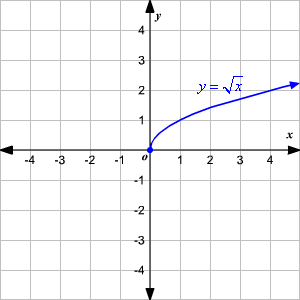Square RootYou are currentlynot logged in Click here to log in |
|
||||||||
Square RootYou are currentlynot logged in Click here to log in |
|
||||||||
The term "square root" usually refers to the definition:
Thus:
When we take the square root of a complex number there is no concept of "positive" so the convention fails and we must then consider both square roots.
By restricting the square root of positive real numbers to the positive result, the square root operation is a function:
|
|

|
|
When taking the square root of a complex number we have more of a problem. The square root is now defined for every complex number, but every complex number (except 0) has two square roots. That means the square root operation is not a function. Trying to choose one of the square roots over the other doesn't solve the problem completely satisfactorily.
It's nice for functions to be continuous, with the result varying slowly as we vary the input. However, consider the square root of 9. Choose one of the roots, say 3. Now move the input point around in a circle of radius 9 anti-clockwise and the square root also moves in a circle anti-clockwise, but only half as fast. As the input point gets to -9 the square root is $3i.$ By the time the input point gets back to its starting point of 9, the output point, the square root, has only got as far as -3. Arbitrarily choosing just one of the square roots means the result cannot be continuous.
We can solve this by using a Riemann Surface, and more generally, operations that have more than one possible answer can be made one-to-one by using a Riemann surface as the CoDomain. (See CoDomain of a function)
See: http://en.wikipedia.org/wiki/Riemann_surface
|
Last change to this page Full Page history Links to this page |
Edit this page (with sufficient authority) Change password |
Recent changes All pages Search |